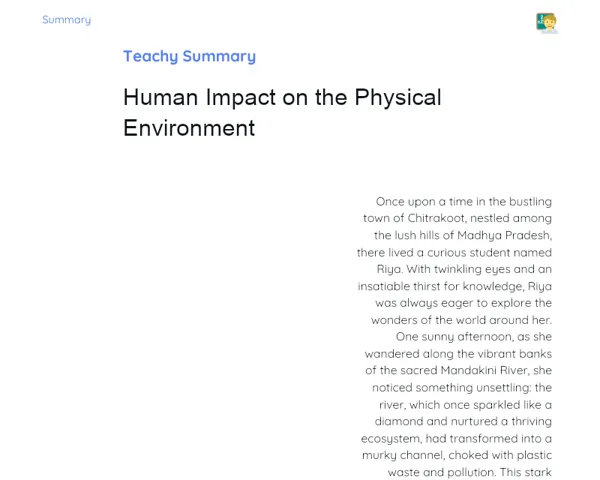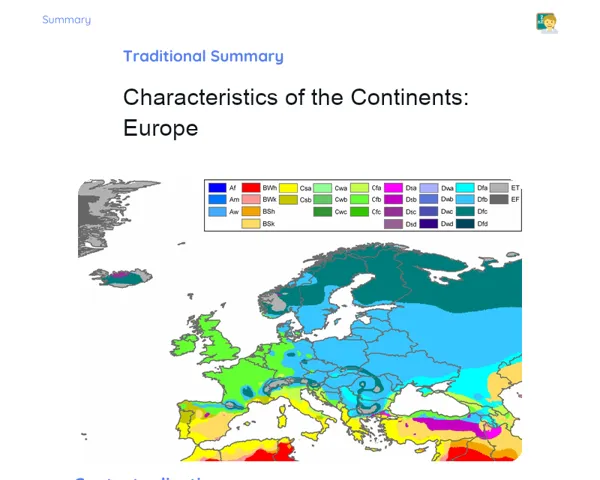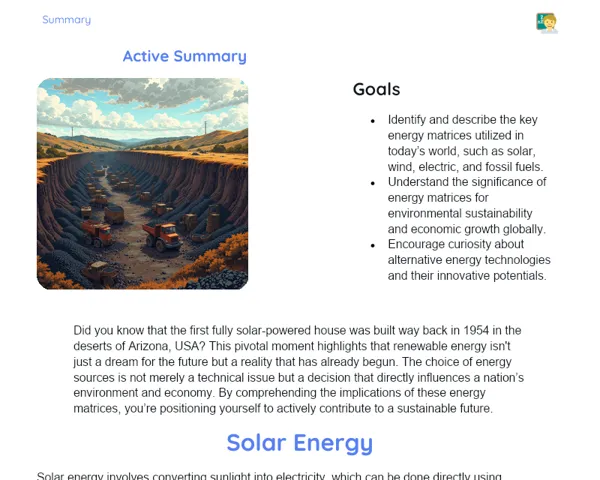Socioemotional Summary Conclusion
Goals
1. Comprehend the significance of renewable energy for sustainable development 🌍.
2. Recognize various sources of renewable energy and their unique characteristics 🔋.
Contextualization
Picture a world where our everyday energy comes from the sun, wind, and water! 🌞💨💧 Given the pressing issues of climate change and environmental degradation today, grasping the concept of renewable energy has become vital. These sources not only help in lowering greenhouse gas emissions but also foster energy independence and generate green jobs 🌱. Let's take a virtual journey to Copenhagen, Denmark—an inspiring city poised to be the world’s first carbon-neutral capital by 2025! Isn't that amazing? 🌟
Exercising Your Knowledge
Solar Energy
Solar energy is harnessed from sunlight, which is an inexhaustible resource. By utilizing photovoltaic panels, we can convert solar energy into electricity. Additionally, solar thermal collectors can convert sunlight into heat, useful for heating water, for example.
-
Photovoltaic Panels: Devices that convert sunlight directly into electricity, widely used in homes and industries across India.
-
Sustainability: As a limitless and non-polluting energy source, solar energy is essential in reducing our reliance on fossil fuels.
-
Costs: Although the initial setup costs can be high, the ongoing energy generation is nearly free, making the investment worthwhile over time.
Wind Energy
Wind energy is captured through wind turbines, which transform the kinetic energy of wind into electrical energy. It's one of the cleanest methods of energy production with minimal environmental impact.
-
Wind Turbines: Equipment that converts wind energy into electricity, which can be installed on land or offshore.
-
Intermittency: The production of wind energy relies on wind speed, which can change unpredictably.
-
Environmental Impact: While wind turbines have a low environmental footprint, they can affect local bird and bat populations, leading to ongoing studies aimed at mitigating these effects.
Hydropower
Hydropower is generated from the flow of water, typically in rivers dammed for this purpose. It stands as one of the most widely used energy sources globally, particularly in countries rich in river systems like India.
-
Hydropower Plants: Large dams that leverage water flows to generate electricity. The Sardar Sarovar Dam in Gujarat is a prominent example.
-
Advantages: High capacity for energy generation and low operational costs once set up.
-
Disadvantages: It can cause significant environmental effects, including the displacement of local communities and changes in aquatic ecosystems.
Key Terms
-
Renewable Energy: Energy sources that naturally replenish and have a minimal environmental footprint, like solar, wind, hydropower, biomass, and geothermal.
-
Sustainable Development: Development that meets current needs without compromising the ability of future generations to meet theirs.
-
Energy Independence: The capacity of a region or country to fulfill its energy requirements without relying on external sources.
For Reflection
-
How do you feel knowing that your energy choices can impact the environment? Reflect on how minor adjustments can lead to substantial changes.
-
What feelings emerge when considering the barriers and solutions to adopting renewable energy? Think about how these emotions might shape your future choices.
-
Having learned about various renewable energy sources, how can you contribute to sustainability in your local community? Contemplating actionable steps can enhance your sense of environmental accountability.
Important Conclusions
-
Renewable energies are vital for promoting sustainable development and minimizing the ecological repercussions of traditional energy sources. 🌿
-
Learning about different energy types, such as solar, wind, and hydropower, helps us appreciate their benefits and challenges while sparking innovative solutions for effective energy use. 💡
-
Adopting renewable energies promotes energy independence and fosters green job creation, providing advantages for both our economy and the ecosystem. 🌍
Impacts on Society
Today, the shift towards renewable energies is reshaping the global energy scenario. Countries like Denmark and Germany are heavily investing in wind and solar energy to lessen their reliance on fossil fuels and champion a more sustainable economy. 🚀 This not only reduces greenhouse gas emissions but also opens up new job opportunities and boosts economic growth. Additionally, rising environmental consciousness is driving individuals and communities to adopt greener practices, like installing solar panels on homes and opting for bicycles over cars. 🚲🌞
Dealing with Emotions
While exploring renewable energies, it's essential to acknowledge your feelings—are you anxious, excited, or unsure? Reflect on the sources of these emotions and how they affect your learning. Accurately label these feelings, such as saying 'I feel anxious about this new topic.' Share your thoughts with peers or educators to express these emotions appropriately. Lastly, learn to manage your emotions by employing relaxation techniques or mindfulness practices to stay focused and calm during your studies. 🧘♂️
Study Tips
-
Draft a study plan to review the various types of renewable energy and their specific features. Break down the information into manageable sections for better understanding. 📅
-
Utilize multimedia resources, such as videos and infographics, to grasp how technologies like wind, solar, and hydropower function. 🎥
-
Participate in discussion groups or online forums to exchange ideas and information with fellow students keen on the topic, helping clarify doubts and deepen your understanding. 💬



